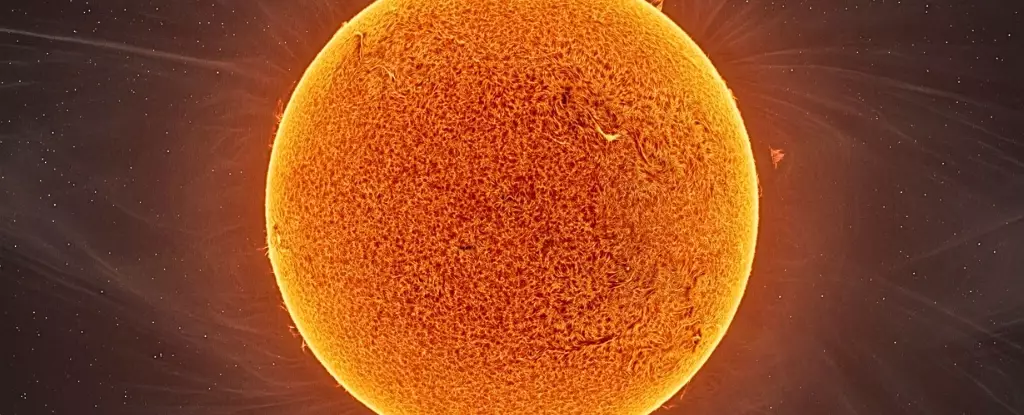In the vastness of our universe, a phenomenon occurs that goes largely unnoticed: the music of starquakes. These stunning events are not merely cosmic curiosities; they are profound instruments for decoding the intricate tapestries of stellar histories. Recent research illuminates the notion that the vibrational signatures emitted by these starquakes can tell us more about the evolution of stars than we have ever imagined. This emerging understanding shifts our perspective on how we interpret the life cycles of celestial bodies, particularly those in the M67 star cluster, which is about 3,000 light-years away from Earth.
Utilizing data from the Kepler space telescope’s K2 mission, researchers have embarked on a quest to understand the evolutionary phases of giant stars. Their discoveries reveal that many stars become trapped in a sort of repetitive cosmic melody. When conditions become turbulent due to the star’s outer layers, a significant transformation occurs. This captivating twist in narrative raises essential questions about the underlying mechanisms governing stellar evolution and our place in the cosmic order.
The Science Behind the Soundwaves
How can vibrations from distant stars lead to breakthroughs in our understanding of cosmic phenomena? The answer lies in the process of examining these starquakes. Think of a kettle of boiling water: as bubbles rise and burst, they cause ripples that travel through the liquid. Similarly, stars with dynamic outer layers experience starquakes—bubbles of hot gas rise and create a symphony of vibrations that reverberate throughout the body of the star. By carefully analyzing variations in a star’s brightness, scientists can detect these resonant frequencies and unravel a cluster’s unique “song.”
This innovative approach challenges prior assumptions regarding resonant frequencies in giant stars. Scientists have long explored the idea that certain frequency signatures held the key to understanding star composition and history. The latest research not only validates that notion but also expands it, revealing that we can glean deeper insights into a star’s internal structure than previously thought possible. The implications stretch far and wide, suggesting fresh vistas in the study of our Milky Way galaxy.
The Evolving Story of Stellar Ages
Understanding the lives of stars is like deciphering an ancient manuscript. Clusters are particularly powerful tools for this analysis because they consist of stars born during the same cosmic era and share similar compositions. M67 is of notable interest as it features stars with chemical makeups akin to that of our Sun. Thus, insights derived from studying M67 extend to our understanding of the Sun’s future, illustrating a link between present and past that informs our knowledge of stellar lifecycles.
The transformative element in recent findings hinges on a critical factor: the small spacing of resonant frequencies within stars. In younger stars, these spacings provide valuable insights into their hydrogen reserves. However, in the older giants, where hydrogen has largely been depleted, it was previously thought that such small spacings bore little significance. Nevertheless, new data reveals otherwise. Researchers have discovered that variations in these spacings correspond to shifts in the star’s inner fusion regions, leading to groundbreaking insights about the behavior of aging stars.
As fields of burning hydrogen shift during stellar evolution, small spacings exhibit unique patterns. Surprisingly, at a specific stage—a moment when the boiling outer layers encapsulate a staggering 80% of a star’s mass—these spacings stall. This stalling, akin to a skipped record, occurs at a delicate boundary where turbulence reigns, and alterations in sound wave propagation take shape. This newfound data does not merely add to our library of knowledge; it acts as a critical tool for identifying star types and refining age estimates with remarkable accuracy.
The Implications for Galactic History
Stars are not just nuclear furnaces; they stand as profound witnesses to the history of our galaxy. As observers of the cosmic tapestry, we can paint a more nuanced picture of past events by studying them. Over eons, the Milky Way has amalgamated with smaller galaxies, with star formation occurring asynchronously across different spatial dimensions. Improved age estimates can now reconstruct this galactic history more effectively than ever before, opening up extensive avenues for research into our universe’s origins.
This transformative research breathes new life into the geological epochs of stars, providing insight that resonates with our understanding of time. The stellar lifecycles reveal not just the passage of time but the relentless march of evolution that echoes across the galaxy. It highlights the interconnectedness of existence and reminds us that we, too, are part of this grand continuum.
Inherent in this exploration is an exciting opportunity to revisit existing data with fresh ears and perspectives. With our new understanding of starquakes and their subtle but grand music, the tapestry of the universe beckons us to listen closely, revealing its mysterious secrets and unfolding stories. By enhancing our knowledge, we embrace a brighter, more informed future, allowing ourselves to engage more fully with the complexities of our celestial home.

Leave a Reply